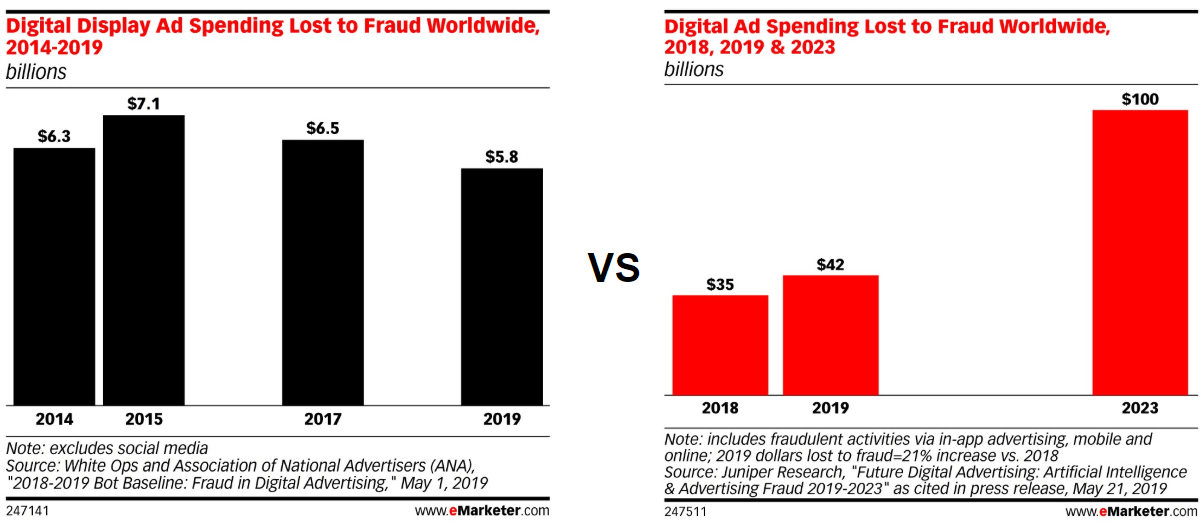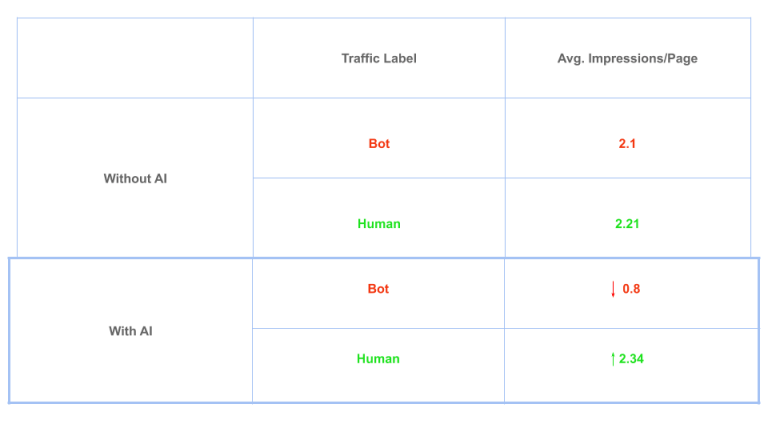Real-Time Tracking of User Behaviour to Reduce IVT in your Ad Inventory
By Asaf Shamly | January 28, 2021

Publishers are often faced with two major challenges when it comes to invalid traffic (IVT): How to measure it and how to reduce it.
Measuring IVT is necessary because ad buyers will require these stats when dealing directly with publishers. And reducing IVT is critical to maximizing the bids on a publisher’s ad inventory, thereby increasing revenue.
The problem is that the IVT rate benchmark varies from vendor to vendor, as does the method a vendor uses to measure it. In fact, the amount of fraud within the digital ad space is estimated anywhere between $6 billion to as high as $19 billion. Over $50 billion will be wasted on ad fraud annually by 2025, according to the World Federation of Advertisers.

And so, if one were being generous, IVT could currently be called a misleading measurement for publishers and advertisers to rely on; if one were being less generous, IVT could be seen as an often-useless metric for gaining a true understanding of the impressions on a publisher’s site.
Traditional solutions simply report what is IVT or not IVT, which does not tackle the problem. By utilizing predictive models and real-time engagement metrics, as Browsi does, publishers can minimize IVT impressions and optimize their overall ad inventory. Enter the world of AI-powered ad inventory.
Digital Advertising’s Explosive Growth
First, let’s briefly put some context around the importance of this advertising market: A study last year by the Pew Research Institute found that 89% of people use the internet regularly, with little gaps seen based on race or gender, as pointed out by Lyfe Marketing. The average American, for example, spends more than 24 hours of their week on the internet.
Lyfe Marketing notes that digital ad revenues surpassed $100 billion for the first time in 2018, which means the space provides significant opportunities to generate revenue for both ad buyers and publishers, and it’s why IVT rates are prioritized by the former when discussing ad inventory with the latter.
It’s impossible for publishers to completely eliminate IVT from a site’s traffic, but because ad buyers only score the traffic they are offered, it’s possible to minimize the negative fallout by excluding all ad calls on invalid traffic.
False Positives – What are GIVT and SIVT?
In order to come up with a solution to help publishers manage IVT, it’s important to first understand the problem. Invalid traffic is defined by Google AdSense as “any clicks or impressions that may artificially inflate an advertiser’s costs or a publisher’s earnings.”
There are two types of invalid traffic: General Invalid Traffic (GIVT) is considered non-malicious because it’s usually legitimate companies (like search engines) that are using web crawlers to index digital properties, but aren’t using their bots to try and mimic human behavior. The other kind is Sophisticated Invalid Traffic (SIVT) that utilizes “more complex forms of fraud” and tries to evade detection by deploying “bots and crawlers pretending to be legitimate users, hijacked devices and user sessions, malicious adware/malware, incentivized manipulation of measurements, and other forms of falsification,” as Mark Kopera, director of Oracle Data Cloud, notes.
An IVT is something like a false positive in that it’s incorrectly telling you that something is there that isn’t. From a publisher’s perspective, both GIVT and SIVT will waste ad revenue, but the latter could also infect a consumer’s device with malware, causing reputational damage for a publisher on top of a revenue hit.
Publishers may also unwittingly send invalid traffic to their own site (usually because they were testing their own live ads), or they could intentionally send invalid traffic to their site as a way to artificially inflate their advertising revenue. Regardless of whether it was intentional or not, IVT could lead to the suspension of a publisher’s AdSense account.
While an account suspension would be a short-term hassle for a publisher to manage, it’s the long-term effects on ad dollars that makes reducing IVT on your site especially critical. Publishers with a high IVT rate can face direct campaign chargebacks, lower bids in programmatic markets and lower CPMs that makes it more difficult to attract buyers, who won’t buy impressions on invalid traffic since it generates no value for them.
The Human Element – A New Approach for Tracking IVT
Central to AI-powered ad inventory solution is the use of deterministic flags from JavaScript parameters and other historical truth sets in order to positively identify visitors as human. What other verification vendors do is simply report what is IVT or not IVT; but identifying traffic as “not bot” or “not IVT” does not necessarily tell you if the ad impression is being made by a human.
Working in collaboration with Dr. Augustine Fou, an ad fraud expert and thought leader in the advertising industry, we were able to correlate invalid traffic data and impressions, viewability and user engagement. This meant looking closely at user behavior at the page level and how it interacts with the content on that page in real-time.
Rather than looking at IVT as a metric or attempting to determine whether a user was a bot or a human, we instead set out to answer this question: “Do I wish to create an ad impression for this user?”
Decreasing the Number of Ads Implemented on IVT by 60%
In order to prove the value of our approach to tracking IVT with user engagement and behavior, including the effect it has on impression scale and viewability, we A/B tested across four different publishers that varied in geographic location, content and traffic sources.
Here’s what the results showed in four key categories:
1. IVT Rate: The IVT rate on total traffic for both test groups was predictably the same (6%-7%) due to the test traffic being randomly selected.
2. Impressions: We found that by utilizing Browsi’s AI with tracking engagement in real-time, we could eliminate the number of ads implemented on IVT. This means, as shown in the table below, that despite the IVT rate being the same for both groups, buyers see mostly quality human impressions through the Browsi engine, where the number of ads/pages implemented on bot traffic was reduced by 60%.

3. Viewability: The overall viewability rate for bot traffic was lower on both test groups, as most of the impressions were still served on valid traffic.
4. User Engagement: The key data points measured around user engagement showed that page load time was almost double for bot traffic than human traffic.
Reducing IVT traffic is not easy for publishers, and the tools that have been used to measure and minimize invalid traffic up to now have failed to do both adequately. By combining AI with real-time engagement tracking, publishers are able to present a better measure of their IVT rate, and ad buyers can feel confident that they’re gaining a better rate of true human impressions on their ads.
Ready to get started with AI-Powered Ad Inventory? Talk to a specialist today.
Latest Articles
-

When Budgets Shrink, Transparency Becomes Power
Today’s media teams aren’t just asked to drive results; they’re asked to defend them. In a market where ad budgets are under the microscope and every dollar must prove its worth, clarity and efficiency win. It’s no longer about spending more — it’s about spending smarter. The brands that can surface waste, double down on what works, and adapt in real time will be the ones that thrive in this new media economy.
View Now -

In Real-Estate and in AdTech – Location is (Almost) Everything
You can have the best ad in the world - high-performing creative, long time in view, shown to an engaged user. But if it’s squeezed between seven other ads on a cluttered page? It’s not going to land. That’s the part we don’t talk about enough. The environment. The layout. The density. The visual noise around the impression. Let’s talk about two under appreciated KPIs that shape that environment.
View Now -

The Open Web Just Got More Transparent (Sort Of)
OpenSincera is a bold step toward greater transparency in MarTech. This free API gives open access to inventory data across the web, signaling a shift toward more informed planning and smarter decision-making. But how far does this visibility really go - and what comes next for advertisers, publishers, and the open web?
View Now
